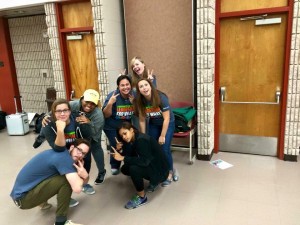Conflict is in every nook and cranny of our everyday lives. Realistically, escaping conflict or living in a conflict-free world is impossible. Conflict usually has a negative tone that comes with it, but not all conflict is necessarily bad. Sometimes having an argument or fight is the best way to handle a situation. By argument or fight, I do not mean yelling, screaming, or hurting the other party; I mean having a respectful conversation that may or may not become heated.
When people release their emotions, things can become more complicated than before. However, letting emotions out is a good tactic to resolving a conflict as long as one knows how to manage their emotions. For example, I have learned that keeping your emotions in may result in a bigger conflict. When working with students from the Jewish Communit
y Center, this concept was evident. Multiple students failed to express how they were feeling, which made their emotions even stronger than before. As a result, the Leadership Consultants developed activities that emphasize communicating how one feels with others, as well as how to improve listening skills. By the end of the semester, the students reflected on what they have learned. One of the students acknowledged the fact that she did not like certain aspects of her job. At the end of the semester, she was able to speak to her boss and share her feelings about her concerns. She was able to move positions in her company to a more manageable job.

2015-2016 LEAD Office Crew at the Leadership Mason Conference.
This example is just one of many that have occurred throughout this school year. With practice, I have progressed in my skills to mediate a conflict efficiently. I have been able to do this by listening to all perspectives of the conflict. Sometimes, this component of managing a conflict can be the quickest route to resolving the issue. Also, I can express my concern for all of the parties involved by being empathetic. After this, I consider multiple solutions that could possibly move the situation forward. By having more than one solution, I am able to pick the best resolution possible.
Working in the Leadership, Education, and Development Office has given me countless opportunities to step up and be a leader. The office’s motto is that everyone has the potential to be a leader, which means that leadership is not only useful in positional jobs. This motto is one that I now live by. I am able to look back and see myself become a leader and use my leadership style in every conflict I have come across. In order to negotiate and manage a conflict, one must become a leader that is confident in him or herself. The LEAD Office has taught me how to acknowledge my strengths and weaknesses in order to be the best leader that I can possibly be. Practice makes perfect; I continue, to this day, to cooperate and collaborate with other to effectively manage and solve conflicts.
